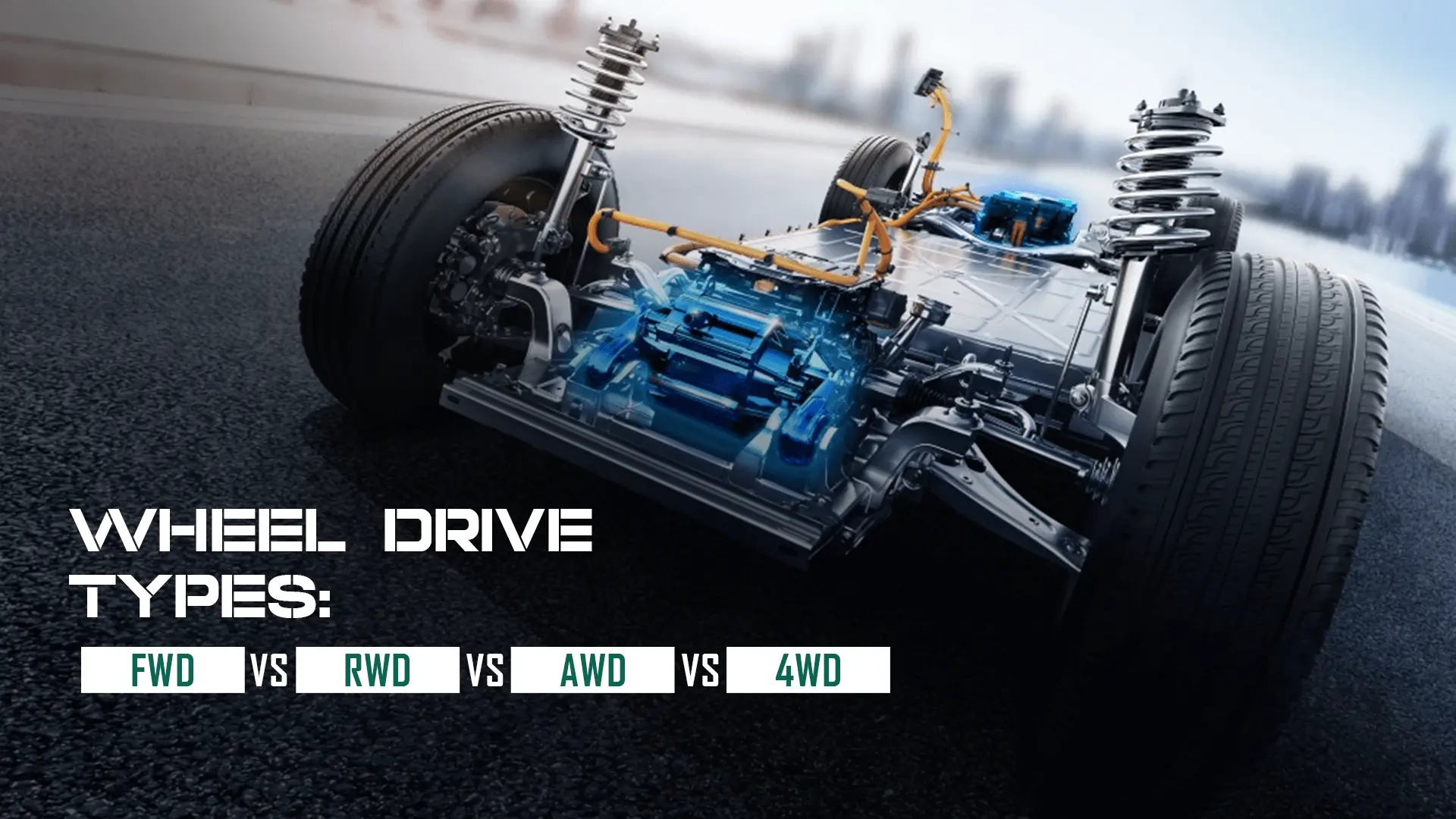Wheel Drive Types: FWD vs RWD vs AWD vs 4WD
November 09, 2025
Wheel Drive Types: FWD vs RWD vs AWD vs 4WD
November 09, 2025
Are you prepared to get the family a new car? Well, understanding various features and wheel drive types is essential when choosing the right vehicle. Okay, we will discuss the wheel type for now.
Why is wheel drive type important, you might ask? Well, the way power is delivered to your car’s wheels affects performance, handling, traction, and fuel efficiency.
And there are four main types of wheel: Front-Wheel Drive (FWD), Rear-Wheel Drive (RWD), All-Wheel Drive (AWD), and Four-Wheel Drive (4WD). With this content, get informed about the wheel types and help yourself to make an informed choice.
The wheel receives power from the engine; describe the wheel drive type. The power distribution in wheels determines how your vehicle moves and performs in different driving conditions.
Cars with front-wheel drive (FWD) only use their engines to power their front wheels. Due to its efficiency and affordability, this configuration is found in the majority of contemporary cars. Our Jaecoo J5 and Omoda E5 both feature an FWD system, offering a smooth and efficient driving experience ideal for city and highway use.
Ideal for: City driving, daily commutes, and mild weather conditions.
Rear-Wheel Drive (RWD) vehicles send power to the back wheels. This type creates a balance between steering and propulsion. These features make RWD popular in sports cars and performance vehicles. The Jaecoo J6, with its RWD setup, delivers enhanced balance and sporty handling for drivers seeking performance and control.
Ideal for: Performance enthusiasts and dry-road conditions.
In an All-Wheel Drive (AWD) system, the engine automatically sends power to all four wheels, adjusting torque as needed. This makes AWD vehicles versatile and ideal for changing road conditions. It has high adaptability compared to others.
Ideal for: Drivers who face rain, snow, or mixed terrain regularly.
Four-Wheel Drive (4WD), which is commonly found in off-road and utility vehicles, allows drivers to manually apply power to all four wheels. It’s built for rugged terrains and challenging conditions.
Ideal for: Off-road adventures, rough terrains, and utility driving.
Your choice depends on where and how you drive:
Before buying your vehicle, understanding wheel drive types is very necessary. This helps you choose a vehicle that matches your driving needs, lifestyle, and environment. Whether you value fuel economy, performance, or off-road power, knowing the difference between FWD, RWD, AWD, and 4WD ensures you pick the right system for the road ahead.
Knowing all these factors of the vehicle makes daily traction easy and manageable. You will have a better idea of its maintenance and power, which will help you have a better experience in your vehicle.
If you’re ready to experience advanced design, technology, and performance in your next drive, explore the latest range of vehicles from Omoda & Jaecoo. Discover innovation and style crafted to elevate every journey.
